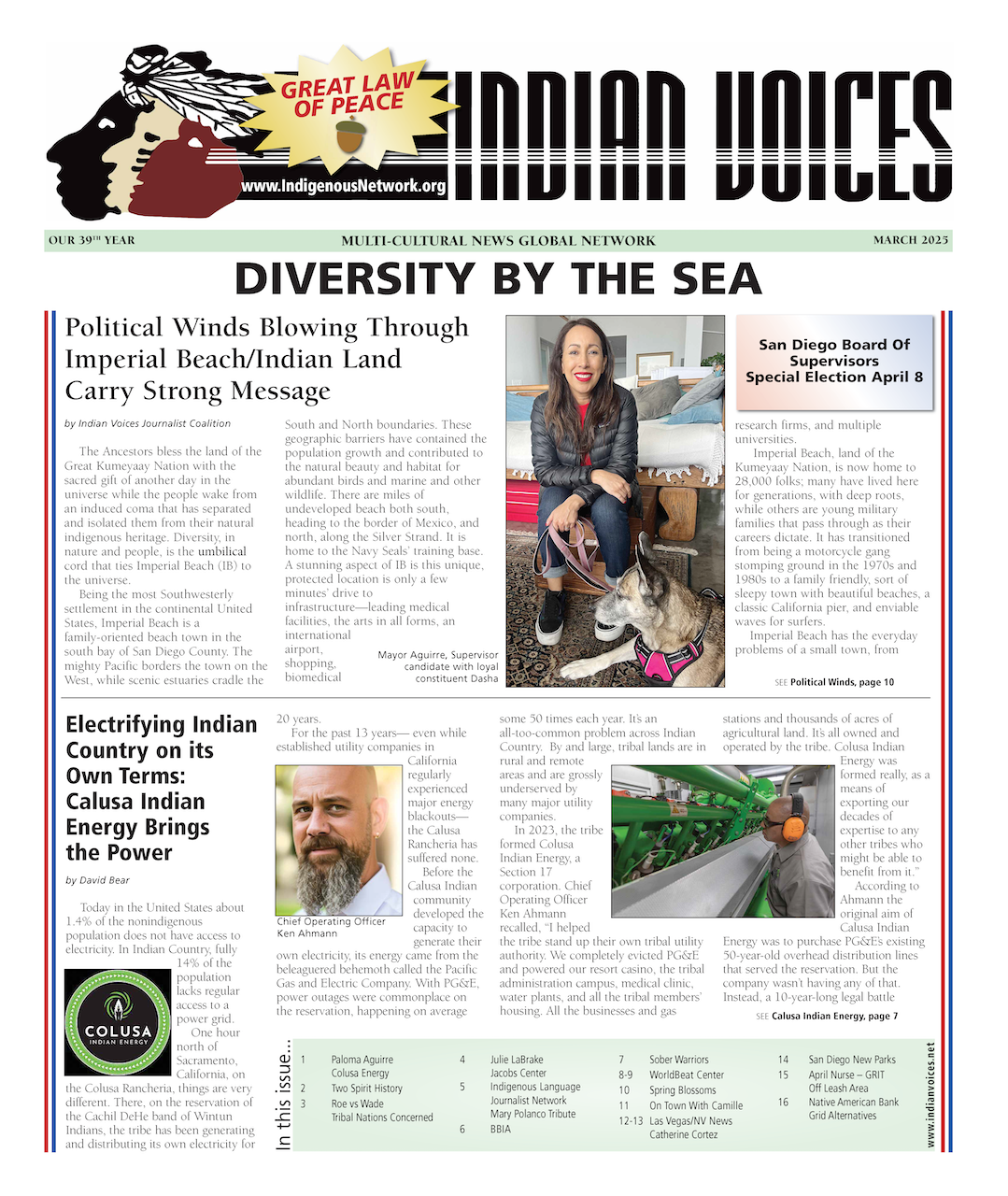On a wildly windy day in the Kumeyaay community Juntas de Nejí, about an hour south of Tecate, Mexico, Norma Meza-Calles watches as her 6- year-old grandson, Matt, cracks open acorns. She gives him pointers in her native tongue.
Matt is Meza-Calles’ hope for keeping the Kumeyaay language and culture alive.
“I’m putting all of my efforts into teaching him to speak fluent Kumeyaay,” Meza-Calles said in Spanish. “I want to make up for not teaching my kids to speak Kumeyaay.”
Norma Meza-Calles is teaching her six-year-old grandson, Matt, to speak Kumeyaay at home. Meza-Calles’s home language school is one small contribution to the weighty task of keeping the language from going the way of thousands of other minority languages: extinct.
“Out of 6,000 approximate languages that are spoken in the world, only about 100 of them are really safe right now,” San Diego State University linguist Margaret Field said. “And those are big languages like Spanish and English, Russian and Chinese.”
All but a handful of Kumeyaay speakers live south of the border. Field said the language has fared better in Mexico than in the U.S. largely because of differences in education policy.
“There’s a long history of American Indian people being forced to go to boarding school where their languages and cultures were actively repressed, and they were taught to be ashamed of their language,” Field said. “That didn’t happen in Mexico. Instead what happened is people either didn’t go to school or went to school for just a little while,” she said.
Meza-Calles and her three sisters only went to school for a few years as children. She said she didn’t learn Spanish until she was 13.
Linguist Margaret Field works with three of the Meza-Calles sisters on documenting the Kumeyaay language.
Now, as adults, the sisters have a rare expertise in their endangered language and culture. Field has met with them regularly for the past five years to record and document the language.
Together they produced online Kumeyaay language lessons, a request from Baja California teachers. Now Field and fellow linguist Amy Miller are working on a dictionary of all five dialects of Kumeyaay spoken in Baja California.
Documenting an endangered language is a painstakingly slow process. Field met three of the Meza-Calles sisters recently at the Kumeyaay museum in Tecate. They took several hours to go over just a few sentences of a Kumeyaay creation story that the sisters had previously recorded.
“For me the most important part is getting down every morpheme on every word,” Field explained. “Every little piece of a word.”
The Meza-Calles family on their land in the Kumeyaay community, Juntas de Nejí, Baja California, Mexico. Back in the Kumeyaay communities of Baja, the real work of keeping the language alive takes place. Meza-Calles’ grandson, Matt, is shy about speaking Kumeyaay, but he seems to understand when his grandmother speaks to him in the language.
“We really started at zero,” Norma said. “Our grandkids didn’t even know they were Kumeyaay. Now they know and they’re proud to be Kumeyaay,” she said, “because we were the first inhabitants of Baja.”
If Norma succeeds in making her grandson a fluent speaker of his ancestral language, it’ll then be his turn to keep the language alive, and eventually to pass it on to his own children. That, at least, is his grandmother’s hope.
Read more at
http://www.kpbs.org/news/2014/may/27/nativespeakers-and-linguists-fight-keep-kumeyaay-/


